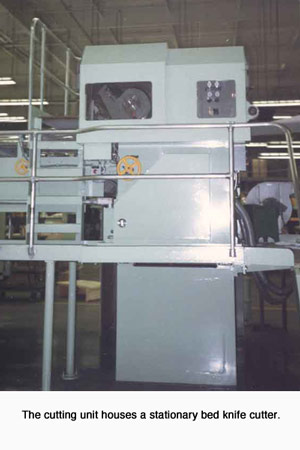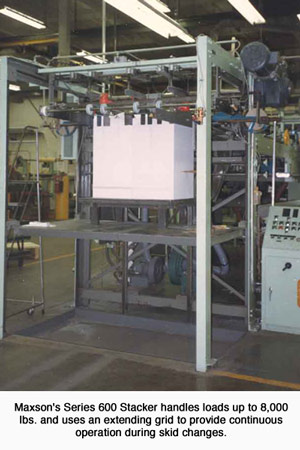After the decision was made to convert its Landmark paper in-house, Georgia-Pacific Corp., Warwick, NY, has purchased a sheeter from Maxson Automatic Machinery Co., Westerly, RI, in an effort to achieve improved profitability and better quality control.
An in-depth study of the company’s needs recommended that the mill acquire an in-house sheeter. The Warwick operation handles most of Georgia-Pacific’s volume of folio-sheeting for its Landmark smooth and vellum printing papers in 40- through 70-lb grades.
 The company made the decision to implement its own in-house sheeting to better maintain control over quality, packaging, and delivery of its converted printing papers to better serve the needs of its printing customers in the East.
The company made the decision to implement its own in-house sheeting to better maintain control over quality, packaging, and delivery of its converted printing papers to better serve the needs of its printing customers in the East.
Accuracy requirements
To meet customer requirements, G-P needed a sheeter that provided close tolerances in a variety of widths and cut-off lengths. The unit also had to create neatly stacked skids as well. Generally, if a stacker produces an uneven, jogged pile of sheets, customers perceive the sheeting as inaccurate. Georgia-Pacific took the MSH’s stacking and delivery capabilities into consideration.
 The unit’s patented airfoil overlap provides fast sheet feeding from the cutting section to the stacker by preventing jam-ups at the point of overlap. The sheeter is said to be particularly effective on lightweight grades.
The unit’s patented airfoil overlap provides fast sheet feeding from the cutting section to the stacker by preventing jam-ups at the point of overlap. The sheeter is said to be particularly effective on lightweight grades.
The airfoil overlap works on the principle of fluid dynamics. Essentially, it pulls the trailing edge of the sheet down, allowing the top sheet to overlap. This prevents the two sheets from colliding. A servo valve automatically modulates the flow of air through the system in relation to line speed.
Product Quality
The printing papers market demands that paper companies provide customers with the finest quality product, excellent service, and prompt, reliable delivery. In-house sheeting has allowed Georgia-Pacific to remain competitive by allowing it to monitor the quality of the sheeted paper before it is delivered to the customer.
At the Warwick operation, each individual order is checked to be sure that there are no flaws in the paper, that the end size meets the requirements specified by the customer, that cut quality and accuracy are within tolerance requirements, and finally, that the converted product is neatly packaged and delivered on time to the customer.
 One reason why Georgia-Pacific has been able to consistently meet customer turnaround requirements is minimal machine downtime in its two years of operation.
One reason why Georgia-Pacific has been able to consistently meet customer turnaround requirements is minimal machine downtime in its two years of operation.
According to sources at the Warwick converting facility, the sheeter is sophisticated enough to do a quality sheeting job, yet simple enough in design for the operator to maintain good performance.
Reprinted from Pulp & Paper, June 1987






